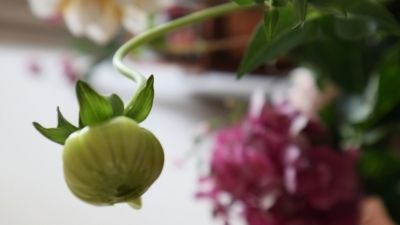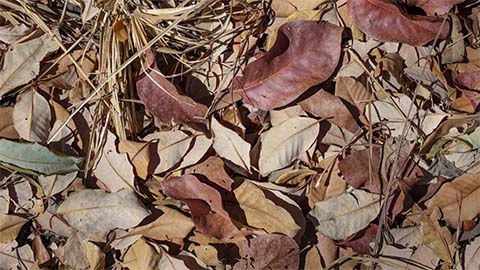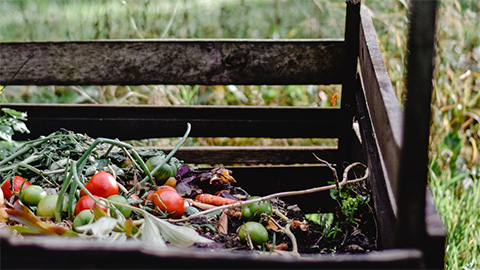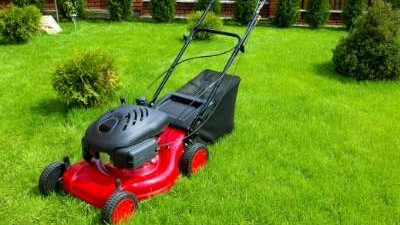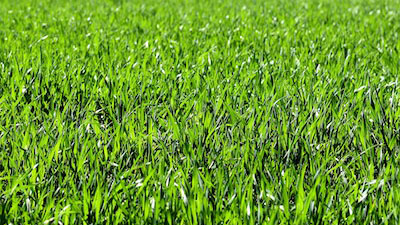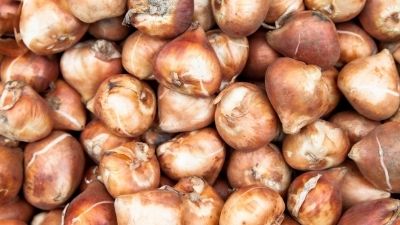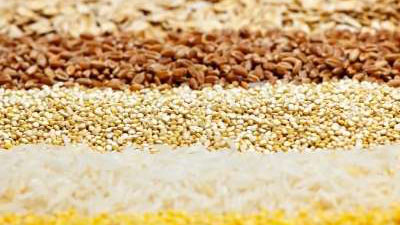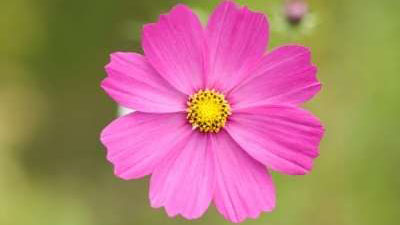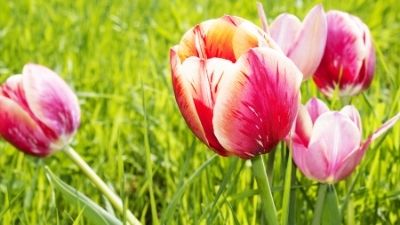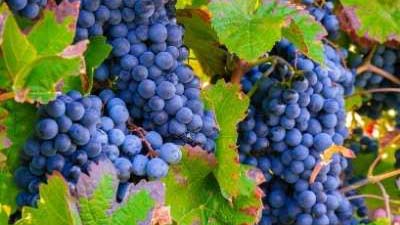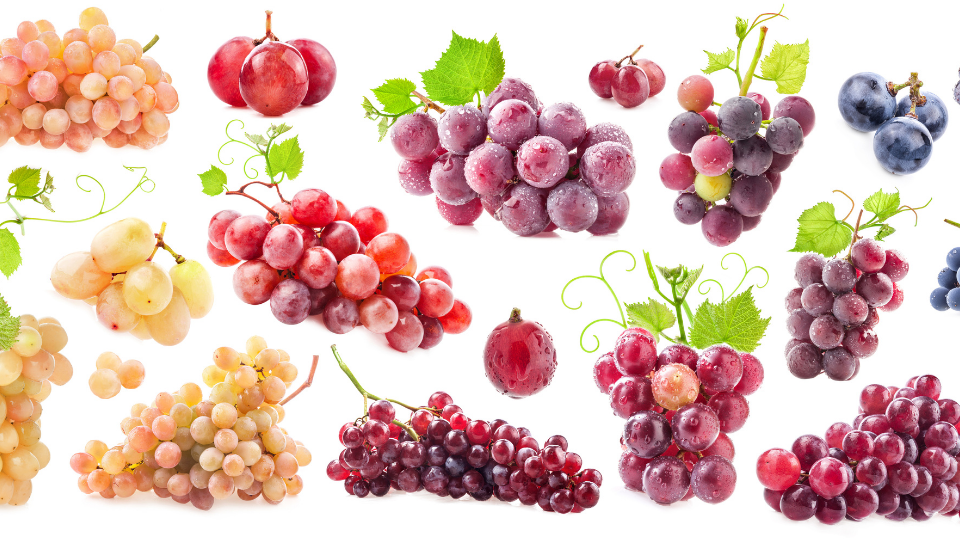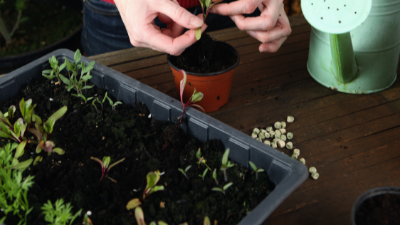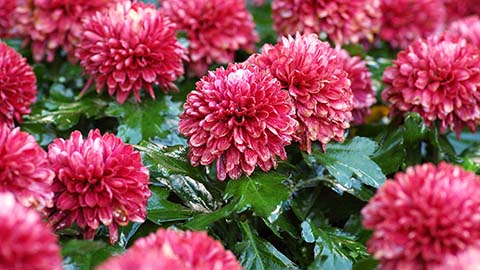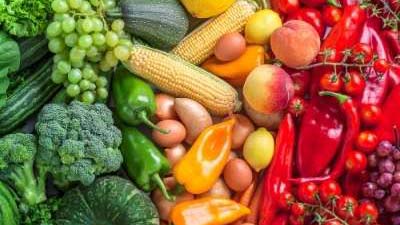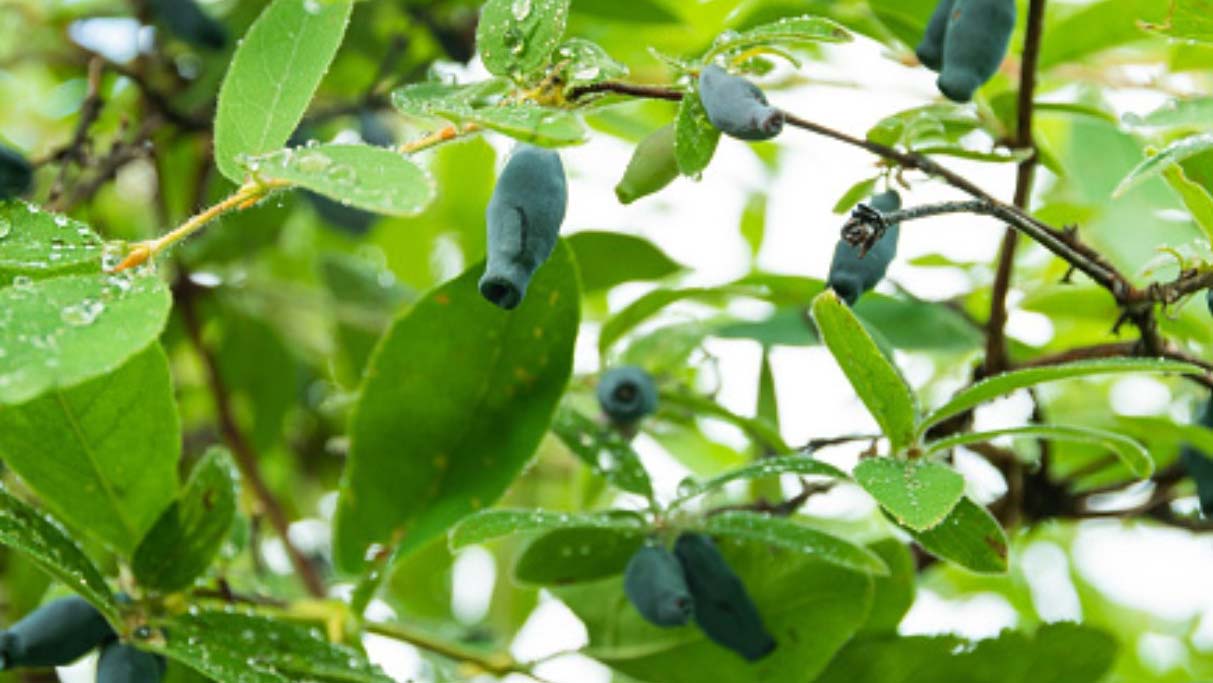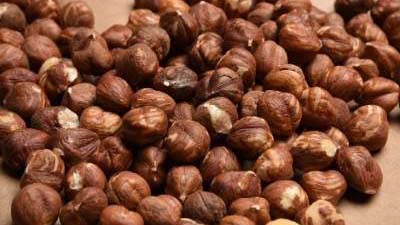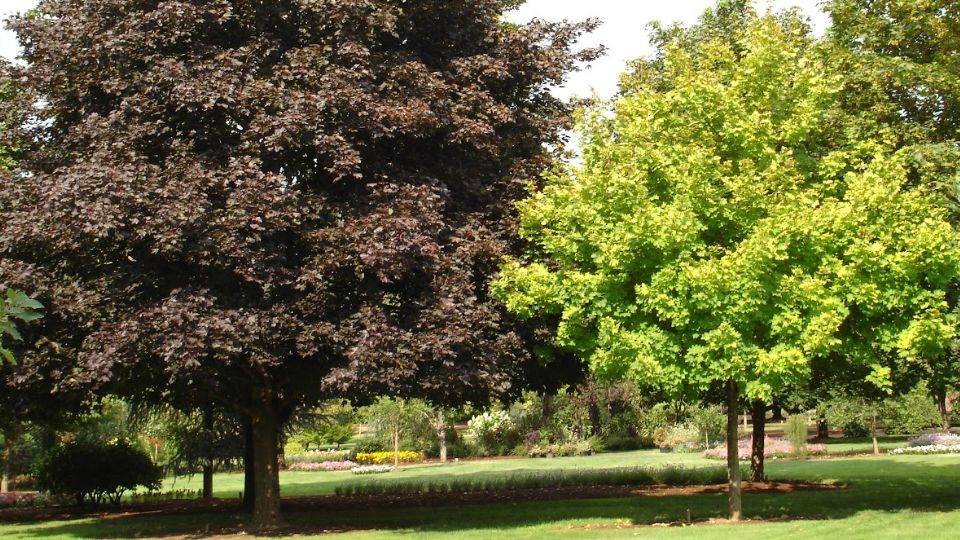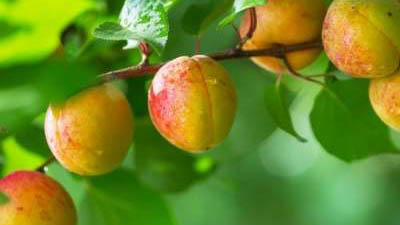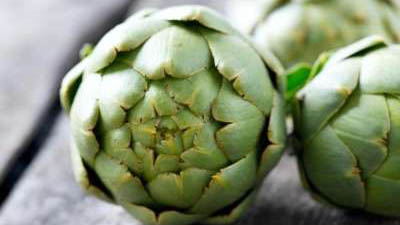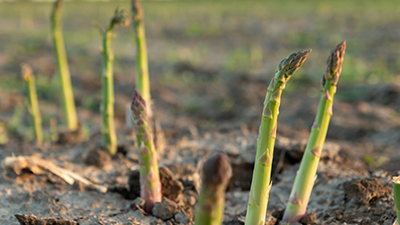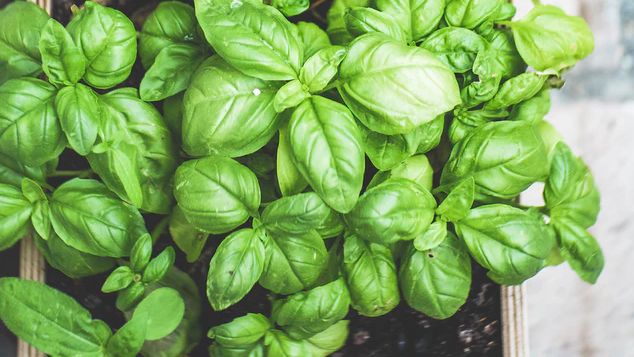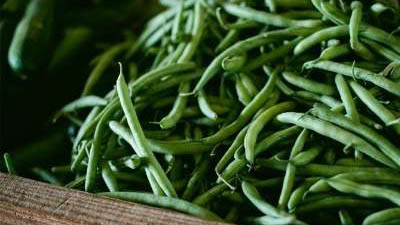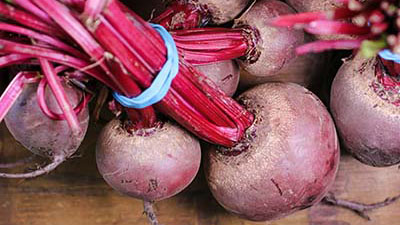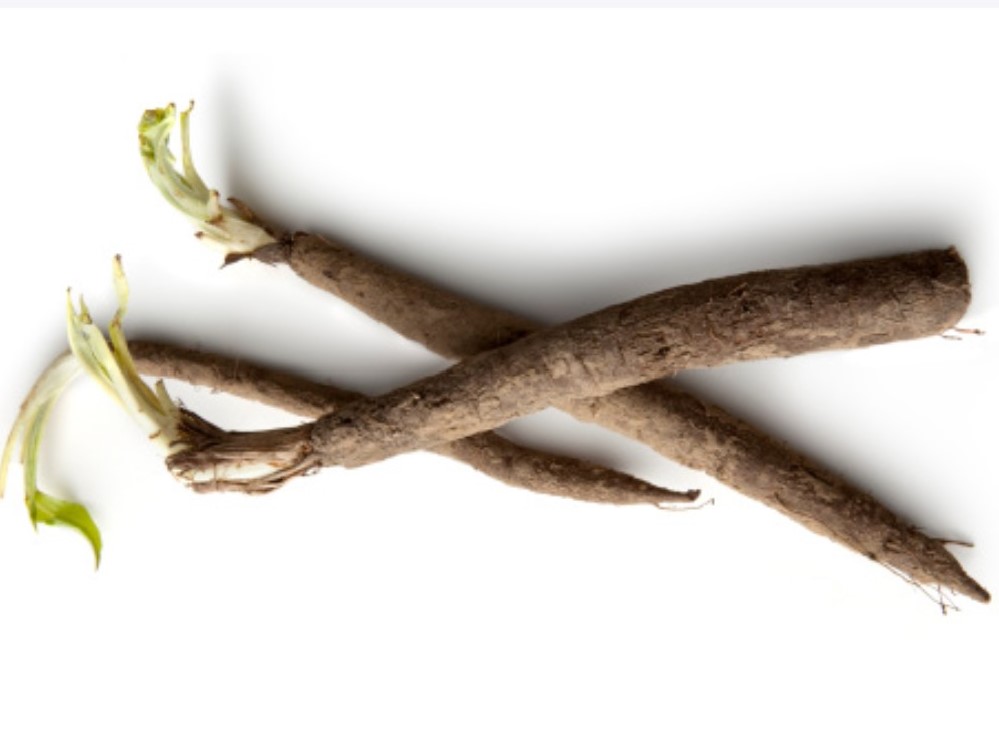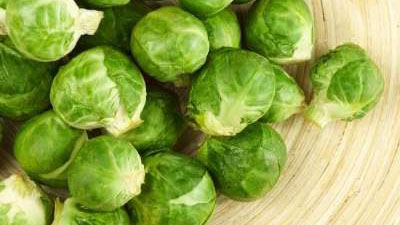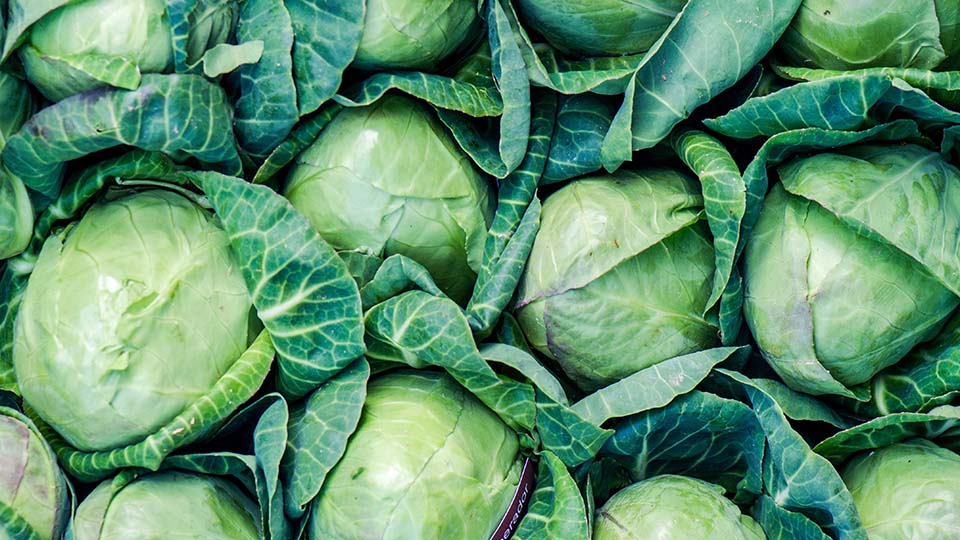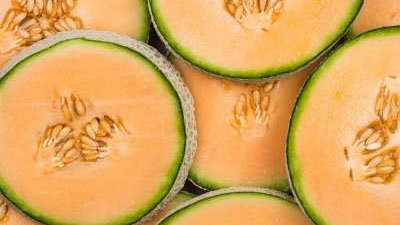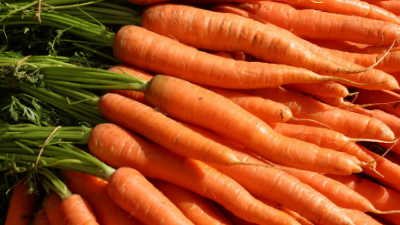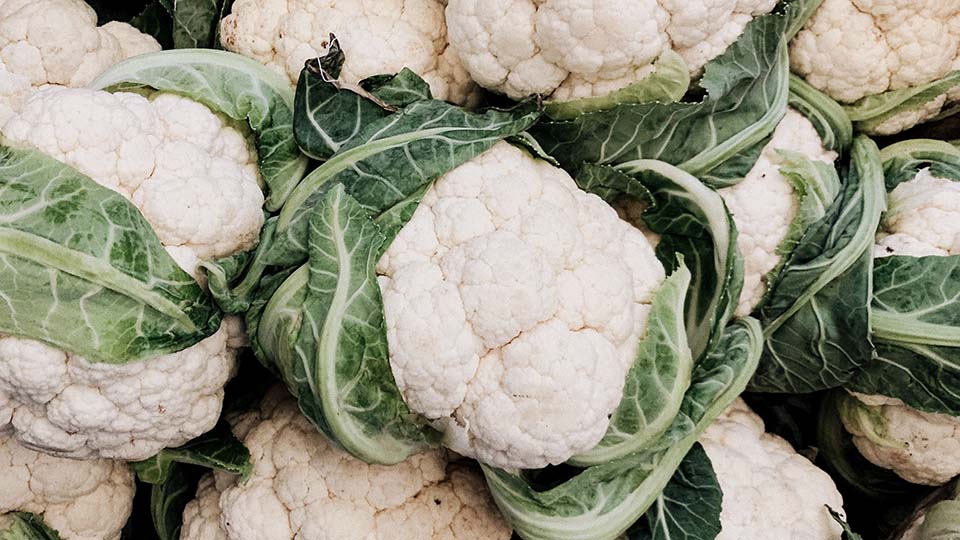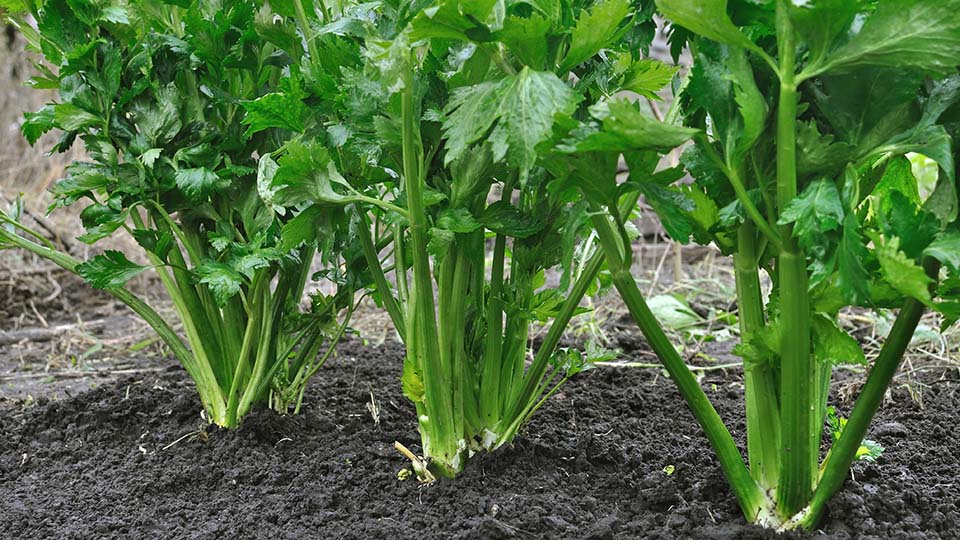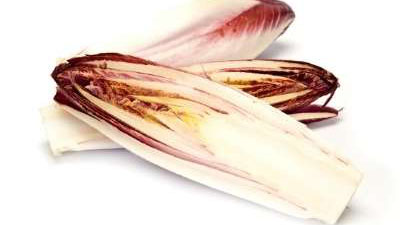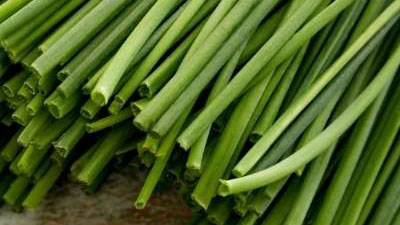Extending the Garden Season

Introduction
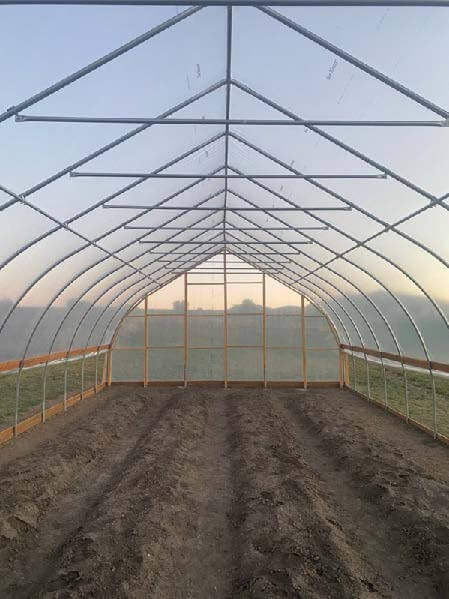
(Note the lack of heaters, ventilation, or supplemental lights.)
Many homeowners have the dream of growing fresh vegetables year-round. Unfortunately, in colder climates, this is only possible using a complete greenhouse with supplemental heating/cooling and lights. Greenhouses can be excessively expensive to maintain and heat, making them impractical for most homeowners. This is not only due to cold winter temperatures but shorter day lengths and lower available light that must be offset artificially.
There are practical, less expensive ways to obtain self-grown produce earlier and later in the growing season using season-extending techniques. These include using equipment such as cold frames, high tunnels (Figure 1), low tunnels, floating row covers, and cloches (such as hot caps) that protect garden plants from cold temperatures. Before spending time and money, it is best to define your crop production goals, budget, and local climate challenges.
Greenhouses vs. Other Season Extension Methods
Greenhouses
Defining what a greenhouse is compared to other similar structures used to protect plants can be confusing. Greenhouses are structures where temperature, humidity, air circulation, and sometimes light levels are actively controlled to maintain conditions conducive to growing plants year-round. This is usually done using electricity, natural gas, evaporative cooling, powered ventilation systems, and supplemental lighting. Greenhouses typically have high energy costs, especially in winter, and even small hobby greenhouses can be expensive to heat and cool. This is especially true if warm-season crops such as tomatoes are grown during the winter.
Passive Season-Extension Structures
Other structures used to collect solar radiation and protect plants from cold weather consist of cloches (hot caps, bell jars, Wall O’ Water, etc.), cold frames, high tunnels, and low tunnels. Cold frames, high tunnels, and low tunnels are similar to greenhouses but are not typically actively controlled to maintain growing conditions. These are discussed in detail later in the publication.
Understanding Your Climate
Climate
When growing in passive structures, it is important to know local weather patterns, such as the average first and last frost dates, average daily highs and lows, and the severity and duration of the coldest, darkest period of the year. In northern and central Utah, mid-March to mid-April, depending on your location, is considered the earliest period for growing cool-season vegetable crops or planting hardy flowers outdoors. This is when crops such as radishes, carrots, peas, onions, pansies, spinach, lettuce, etc., can be planted outside without protection. Depending on the type and level of protection, these crops may be planted several days to a month earlier or later in the season, depending on which end of the season you are extending. Beyond this time frame, further consideration must be given to the level of freeze protection provided.
Temperatures and Temperature Regulation
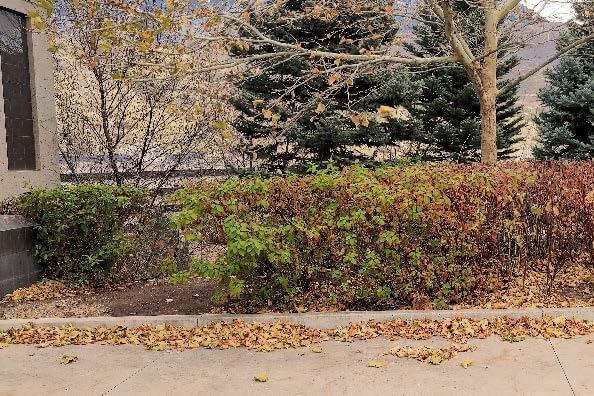
Avoid situating season-extending structures in areas that lack cold air drainage. These include the bottom of a hill and areas surrounded by fences or buildings that prevent airflow or that are otherwise sunken. Cold air is denser and sinks, and these are almost always colder than areas of even slightly higher elevation. Conversely, areas near buildings are often a few degrees warmer, as long as the buildings do not allow cold air to pool. As shown in Figure 2, the shrubs closer to the building still have green leaves, while the shrubs farther away have lost their leaves in autumn. A common area to erect season-extension structures is on the south and west sides of buildings. This is due to reflected and retained heat radiating from the building and protection from wind keeping the closest shrubs a few degrees warmer.
Temperature monitoring is important when using season-extension techniques. Even small structures will have excessive heat buildup on sunny days and may damage plants. Temperature monitoring can be accomplished with inexpensive soil and air thermometers (Figure 3). Check these devices regularly to determine if temperatures exceed thresholds that can cause plant damage. Keep this in mind for both excessively warm and cool temperatures.
Table 1. Temperature Recommendations for Growing Cool- and Warm-Season Crops
| Cool season crops | Warm season crops | |||
| Minimum | Ideal | Minimum | Ideal | |
| Air | 40℉ | 50–80℉ | 50℉ | 70–85℉ |
| Soil | 45℉ | 60–65℉ | 60℉ | 70–75℉ |

Soil temperatures are important to consider. Early in the growing season, soil exposed to direct sunlight will heat more quickly inside structures such as high tunnels and other types of cold frames. Soil temperatures also warm more quickly in raised garden boxes. A general recommendation is to prep or till the area to be planted several days before planting seeds or young plants to allow the soil profile to warm appropriately. Table 1 shows general temperature recommendations (both air and soil) for cool- and warm-season vegetable crops
Types of Structures
Cloche
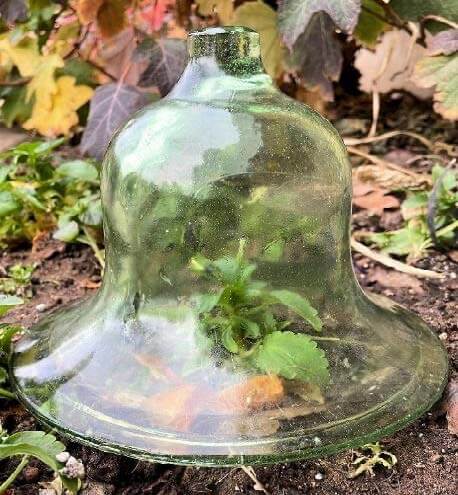
The cloche was historically used in market gardens in 19th century France as a means of providing a few degrees of added warmth during periods of cool temperature. Cloches were originally made from glass and shaped like bells (cloche means “bell” in French). The intent is to cover each plant in a field with a cloche (Figure 4). Modern cloches are made from paper or plastic and often have a means for ventilation to release some of the warm air that builds up during the heat of the day. Homemade cloches are easily constructed by cutting the bottoms of plastic milk jugs. Because cloches only cover a single plant, they are labor-intensive to install and remove and space-intensive to store when not in use. Cloches are less popular in modern gardens but are still in use.
Water-Filled Cloche
A modern cloche adaptation includes various products made of flexible plastic that allow gardeners to add water to the side walls, increasing thecloche’s insulation value. They are usually open-topped to increase air circulation inside the structure. The water in the side walls warms during the day and then the heat is released, keeping temperatures higher around the young plants at night. They are often used in planting high-value, warm-season crops, such as tomatoes and peppers. As plants grow, they may protrude out of the top, subject to cold temperatures, and should be protected.
Because daytime temperatures inside can be 20º F to 40º F hotter in cloches than the ambient air temperature (especially on a sunny day), it is important to remove them once daytime temperatures are consistently above 60º F to avoid heat damage to the plants inside. The most well-known brand is the Wall O’ Water, but this is not the only available option.
Cold Frames

There are a few different kinds of structures referred to as cold frames that range from relatively small-framed boxes to large structures. Traditionally, they are built low to the ground and accessed by opening or removing the lid (Figure 5). The lower portion of the cold frame is faced south or west to maximize sun penetration through the lid. Cold frames often consist of hard sides, usually built from lumber, bricks, or cement with a transparent covering of plastic or glass making up the tops or lids. Cold frame tops are built on a south-facing angle to capture sunlight more directly early in the season. Upcycled windows and transparent plastics such as polycarbonate, polyethylene film, and acrylic are used. When the lid is closed, little air circulation occurs inside the cold frame. As with other structures, cold frame lids must be opened or removed during the day to prevent excessive temperature buildup and then closed again at night to offer protection from cold temperatures. There are many plans available online for constructing your own cold frame. There are also inexpensive, portable, collapsible devices that serve the same function that can be purchased online or from local retailers. Because they are lightweight and susceptible to blowing away, portable cold frames must be secured in place.
Floating Row Cover
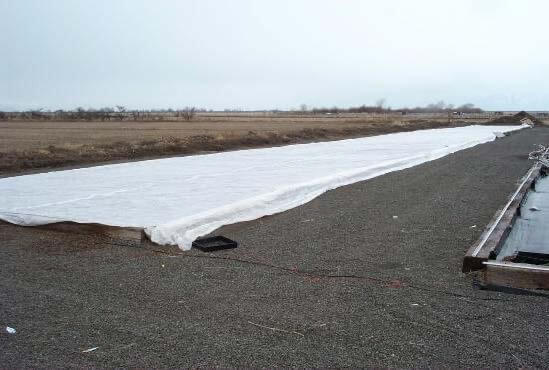
A floating row cover, also referred to as a frost blanket, is a lightweight fabric available in various thicknesses. These fabric “tarps” are used commercially to drape over plants during times of frost danger (Figure 6). Depending on the size, it can be used to cover an individual plant, groups of plants, or entire rows of plants. The fabric is light enough that it “floats” or rests on top of the plants themselves and does not need additional supports. The plants push the fabric up as they grow. It is often secured along the edges with landscape staples, bricks, boards, or soil to prevent the fabric from blowing away. Row covers can also be placed over frames made from metal, plastic, fiberglass, or even wood. Depending on the grade used, air temperatures under the fabric will be between 2º F to 10º F higher than the surrounding air. Row covers are designed to let air, water, and light penetrate through to the plant canopy. They may also be used for brief periods during the growing season to exclude certain insect pests from vegetable crops.
Hotbeds
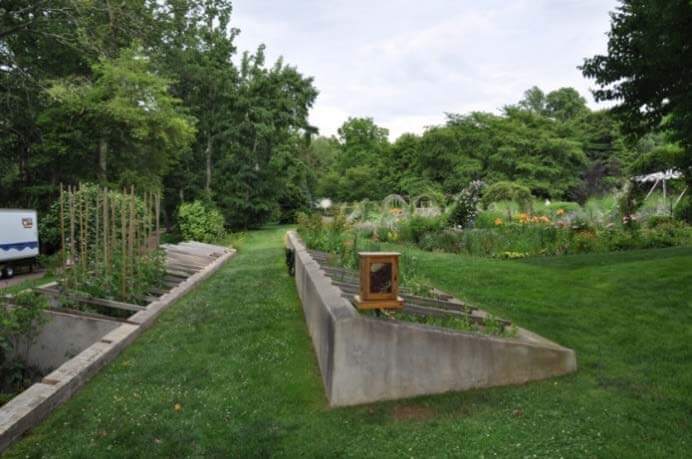
Hotbeds are not very common today but are similar in design and purpose to a cold frame (Figure 7). The difference is that a heat cable is placed in the soil to warm the soil. Historically, raw, uncomposted manures were buried deep inside a hotbed, with topsoil placed atop the manure. As the manure broke down, heat from microbial activity warmed the bed. Hotbeds can generally be used earlier in the season but are managed similarly to cold frames. They can be used to germinate vegetables from seed and grow vegetable crops for an earlier harvest.
To install a soil heat cable, excavate 3 to 5 inches (following manufacturer’s recommendations) below the soil surface where the cold frame sits. Loop the cable back and forth in a serpentine pattern, spacing the cable rows approximately 6 inches apart (Figure 8). Cover the cable with sand, pea gravel, potting soil, raised bed mix, or the native soil; determine the material used based on what crop will be grown in the hotbed. Sand and gravel are useful for placing seed trays on. Use potting soil for germinating seeds that will later be lifted and transplanted into containers or elsewhere in the garden. Raised bed mixes or native soil are useful for growing directly in the hotbed.
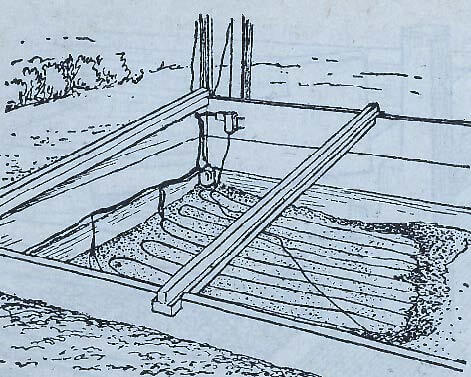
Tip: After the hotbed is constructed, use an inexpensive kitchen thermometer to monitor soil temperatures for a few days before planting. Ideal internal air and soil temperatures previously discussed also apply to hotbeds.
Plastic Mulch
Plastic mulch is UV-resistant plastic sheeting placed over the soil to quickly warm the soil. Plastic mulch also warms the air near its surface a few degrees above the ambient temperature, which may benefit newly planted transplants or seeds. It is among the least expensive season-extending methods for hobby gardeners and generally allows most crops to be planted one to two weeks earlier than usual in most areas of Utah. Black, red, white, and translucent are the main colors of plastic mulch available. Black plastic is the best to use in most situations, although red is also frequently used in tomatoes (Figure 9). Plastic garden mulches are usually 3–4 feet wide on rolls several hundred feet long, although smaller lengths are also commonly available. Gardeners can use construction-grade plastic sheeting but must ensure it is UV resistant, or it will degrade quickly.
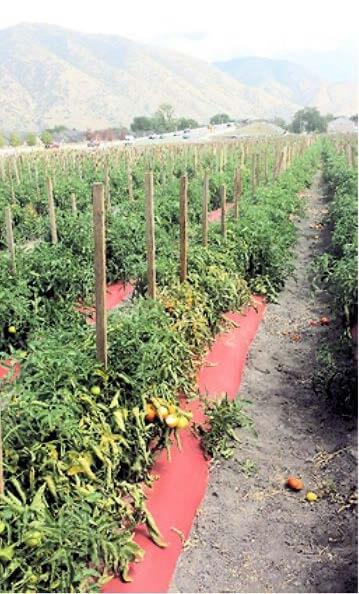
Once plants emerge above the plastic or transplants are planted through it, if hard frost is predicted, the plants must be covered to protect them from damage. Plastic mulch can be left on the soil for the season in most areas of Utah, depending on the crop. Root crops such as potatoes, sweet potatoes, peanuts, carrots, beets, and radishes should not be left to mature under plastic mulch. It is fine to start them, but remove the plastic by early summer to avoid overheated soil, which will reduce yields. Plastic sheeting is especially useful for securing more consistent harvests for tomatoes, peppers, melons, and other warm-season crops in areas with short growing seasons.
A drip irrigation line is typically laid along the row when using plastic mulch. The plastic is then stretched over the row top and the irrigation line and then secured on either side by covering the edges of the plastic with soil. Once the plastic is secured, cut holes in the plastic near the irrigation line where seeds or transplants will be planted. Be careful to not damage the drip irrigation while doing this. Plastic sheeting with drip irrigation can also be used on level ground.
Low Tunnels
Low tunnels are temporary structures that are about 4 feet tall and 3 to 6 feet wide. They are usually constructed of hoops made from rebar, electrical conduit, or PVC pipe. Purchase ready-to-install hoops or construct them yourself by simply bending PVC pipe or using a bender to form metal conduit. Low tunnels are inexpensive and provide minimal temperature protection (usually between 2º F to 4º F), depending on the material selected to cover the structure. One advantage of low tunnels is that they protect young plants from snow. This is especially important with high-quality, high-value crops.
For the most common type of low tunnels, structural hoops are often slid over a rebar that has been pounded into the ground. The hoops are covered with a lightweight fabric or greenhouse plastic to help retain heat. A sturdier frame with upper and lower rails may also be built, which allows one side or even the entire structure to be lifted and replaced when the work is completed. PVC and other plastic materials degrade over time and should be replaced periodically. To extend PVC longevity, apply water-based latex paint to the PVC. Wooden low tunnels are sturdy but heavier and cumbersome, while fiberglass versions may be too light and excessively flimsy.
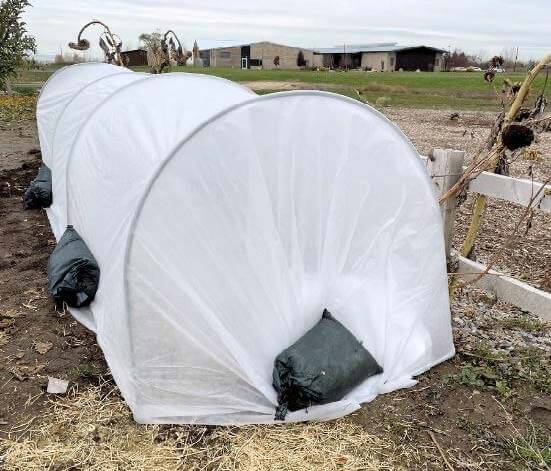
Low tunnel covers can easily be blown off. Heavy objects, such as sandbags, bricks, stones, or long lengths of pipe can hold the sides down to the ground (Figure 10). If you are overwintering crops but don’t necessarily need to access them, bury the sides of the fabric or plastic with rows of soil, which adds stability and strength.
Most row covers can provide freeze protection down to temperatures around 24º F to 28º F. Fabric coverings provide less heat retention than greenhouse plastics, but the fabric has the advantage of allowing air and water permeability, thus reducing the need to irrigate and ventilate the low tunnel when in use. With colder temperatures, adding a greenhouse-grade plastic covering over the fabric cover will provide slightly more insulation value but will have to be vented during the day.
High Tunnels
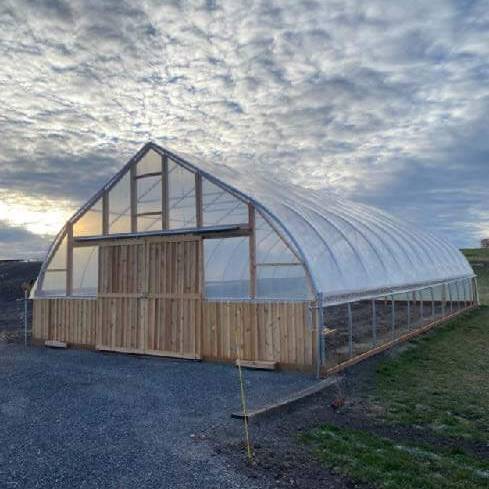
High tunnels are tall enough to stand inside and are often large enough to accommodate walk-behind tillers or even small tractors. They are more commonly used by commercial growers but are becoming more popular with backyard and homestead gardeners. High tunnels consist of a framework of metal or plastic ribs with greenhouse plastic stretched over them. This large volume of enclosed air gives growers greater heat retention than other passive methods and structures. High tunnels also lengthen the season more than other methods discussed. They can add approximately a month to the growing season in early spring and late autumn without additional measures, especially when growing warm-season crops.
However, some grow certain cool-season crops through the winter. They combine multiple techniques, such as using a floating row cover or a low tunnel inside a high tunnel to increase nighttime temperatures immediately around crops. Some crops that can withstand low winter temperatures and reduced sunlight include spinach, lettuce, bok choy, and other leafy greens.
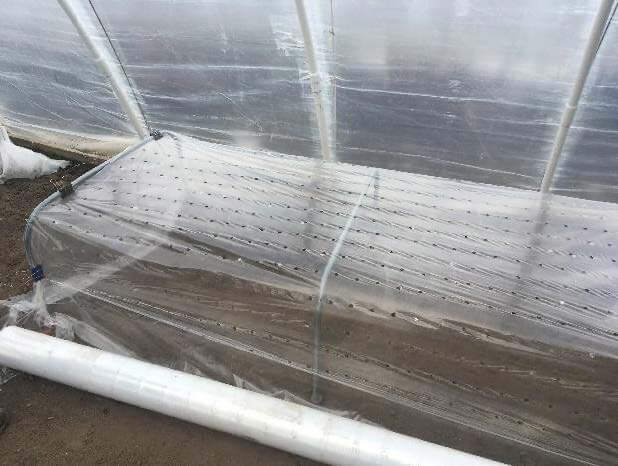
Tomatoes can be planted in the tunnel in late winter to early spring (usually in March along the Wasatch Front) to provide a much earlier harvest than field planting. Perennial crops, such as strawberries, raspberries, and cut flowers, like peonies, have been grown effectively in high tunnels and have produced earlier and later in the season. This provides high-quality produce and flowers during the off-peak market times and can increase a grower’s profit margin, allowing produce and flower sales at a premium price.
High Tunnel Temperature Control
Even when they are well ventilated, temperatures inside a high tunnel are typically still 10º F to 15º F warmer than the outside temperature during the day. This can vary during sunny days. Even in January, temperatures inside a high tunnel can easily reach 100º F but be near 0º F at night. As the season progresses, temperatures as high as 120º F to 140º F have been recorded in March and April.
Control temperature by opening or removing the sidewalls, doors, or roof vents to allow hot air to escape and cooler outside air to circulate through the structure. Conversely, the walls, doors, and vents are closed at night to retain the warmer temperatures. Nighttime temperatures inside may vary by just a few degrees warmer than those outside.
During the summer, remove the covering of the structure to allow the plants to grow in the open. Generally speaking, most greenhouse plastics are rated for 5 to 6 years. Removing the plastic will add longevity to the plastic. However, it is becoming more common for local growers to keep the greenhouse plastic on the structures during the summer months. To offset the extra heat, the plastic is often temporarily covered with shade cloth and ventilated accordingly.

Whether or not the plastic is removed, adding a layer of shade cloth can significantly reduce the solar radiation and heat stress on the plants (Figure 13). This improves yield, particularly the amount of marketable product with less sun damage. It also decreases flower bud abortion on plants due to excessive heat stress. Additionally, fruiting vegetables ripen earlier in the season. Due to our high solar radiation, plants still receive sufficient sunlight when shade cloth is used that provides up to 20%–30% shade. Shade cloth is deployed when summer temperatures are consistently above
90º F and removed in early fall. You can learn more about temperature management in the Temperature Management in High Tunnels fact sheet.
Pests can be a concern in high tunnels and are similar to the pests encountered in greenhouses. Aphids, thrips, whiteflies, cutworms, and many others can cause damage to vegetables and cut flowers. Scouting and early management should be a priority to prevent major infestations of difficult-to-control insects. You can learn more about greenhouse pest management at the Utah Pests website: https://extension.usu.edu/pests/files/pubs/greenhousebio-USU.pdf
Table 2. Types of Structures Summary
|
Method2 |
Protection level1 |
Cost to purchase |
Comments |
|
Cloche |
Low–medium |
15–45 |
Available for purchase from most garden centers, farm stores, and online. |
|
Wall-of-Water |
Medium |
15–45 |
Wall O’ Water is a specific brand, but many similar products exist, available for purchase from most garden centers, farm stores, and online. |
|
Floating row cover |
Low–medium |
10–303 |
Many brands are available. Available for purchase from most garden centers, farm stores, and online. |
|
Low tunnel |
Medium |
20–1003 |
Many kits are available online and at local farm stores and garden centers. Frames can also be made and coverings purchased separately. |
|
Cold frame |
Medium |
70–2003 |
Many kits are available online and at local farm stores and garden centers. Can also be constructed at home and coverings purchased separately. |
|
High tunnel |
Medium–high |
1,000–5,0003 |
Kits are available online. Some farm and garden supply houses also stock kits. Can also be constructed at home from construction lumber or separately purchased parts. |
|
Hot bed |
Medium–high |
100–2003 |
Should be constructed of more durable materials. Horticultural heat cable is sometimes difficult to locate locally but is sometimes available at local garden centers, farm stores, hardware stores, or online. |
|
Greenhouse |
High |
2,000–10,0003 |
|
|
1 Low = Plant 1–2 weeks before suggested planting date; Medium = 2–4 weeks before suggested planting date; High = 4–8 weeks before average planting date 2 Reference the USU Extension fact sheet, “Suggested Planting Dates for The Wasatch Front” for specific planting dates. 3Cost depends on the amount built or purchased. |
|||
Photo Credits
All images are the original work of the authors, with these exceptions: Figure 8 is from the public domain, and James Frisby provided Figure 13.
References
- Black, B., & Drost, D. (2010). Temperature management in high tunnels. Utah State University Extension. https://digitalcommons.usu.edu/extension_curall/258/
- Harris, T., Streets, J., & Carpenter, J. (n.d.). Low tunnels for beginners. West Virginia University Extension Service. https://extension.wvu.edu/lawn-gardening-pests/gardening/beginner-gardening/low-tunnels-for-beginners
- Murray, M. (2017). Greenhouse biocontrol in Utah. Utah State University Extension IPM Program. https://extension.usu.edu/pests/files/pubs/greenhousebio-USU.pdf
- Pothour, G. (2017). Soil temperature conditions for vegetable seed germination. Garden Notes, University of California Extension, Sacramento County. http://sacmg.ucanr.edu/files/164220.pdf
- Traunfeld, J. (2014). Floating row covers. University of Maryland. https://extension.umd.edu/resource/row-covers
May 2022
Utah State University Extension
Peer-reviewed fact sheet
Authors
Taun Beddes, Mike Caron, Sheriden Hansen, and JayDee Gunnell
Related Research





